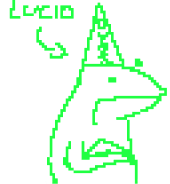"Rules of Play" is Such a Bad Book
October 05, 2024
To those who do not know, Rules of Play: Game Design Fundamentals is a 2003 book on game design which is considered to be Required Reading to anyone looking to enter the more conceptual side of the field. If you wanna think deeper and more methodically about game design, you have to read this book. Atleast, that’s what everyone else told me. I’ve been trying to finish this book for months and I have no idea what crack everyone else is on.
I’ve had issues in the past with game design books being way too “do as I say”-esque rather than conceptual; “Here’s how to make a game” instead of “here’s what the usage of dice does to a game’s dynamic.” It was annoying, but at the very least it was practical. This book is conceptual, but it is also incredibly prescriptive about game design, constantly saying how things must be rather than how they actually are. They define and redefine all over the place which seems normal for a theoretical book but the definitions are arbitrary and often incredibly wrong!
For example - what even is “a game” is something the book dedicates several chapters towards, which is understandable given the fact that it’s an incredibly complex question: how do you give a singular, accurate definition that groups together slot machines, chess, professional football, and the kids’ game House? It’s an incredibly complex task and the book tries to define games as so:
A game is a system in which players engage in an artificial conflict, defined by rules, that results in a quantifiable outcome.
Which is a pretty good definition, but it still ends up leaving a lot of games out of it (something the book itself acknowledges) - what is the quantifiable outcome of an MMO? What are the rules of house? The book tries to clarify this ambiguity by separating “serious games” like chess from mere “play” like House, but that still leaves the massive issue of “quantifiable outcome”; is Animal Crossing not a game anymore?
It’d be one thing if the book says “this isn’t a perfect definition but it’s good enough to give a general idea of what we mean,” but the book treats it as gospel moving forward, saying games must have quantifiable outcomes left and right. A similar thing happens with the definition of “Play”, described as:
free movement within a more rigid structure.
A beautiful, elegant definition which makes less sense the more you think about it. The sheer amount of things which count as “play” here is staggering. A car driving down a road is “playful” now, so is a train almost (but not entirely) falling off its tracks and accidentally dropping my pencil into the trashbin. This kind of definition madness keeps happening all over the book, with new dichotomies being introduced left and right with so little time spent on explaining why they’re valid or why we even need a dichotomy to begin with. I’m about halfway into the book and sincerely trying to give it a shot, but the writing is as dry as sawdust which does not help the stress levels that build within me as the book insists on yet another framework I need to memorize that has 4 contradictions and 3 unnecessary components.
If anyone reading this has also read Rules of Play and can explain to me what’s up with this book, I beg you to do so. I’m not kidding, please email me. I really hope I’m just missing something, whether it be historical context or just misunderstanding most of the book. In the meanwhile I’ll just try to keep reading the book without popping a blood vessel, and if I can’t do that, I’ll just pick up my old Hellboy books and read something that requires negative braincells to enjoy.
